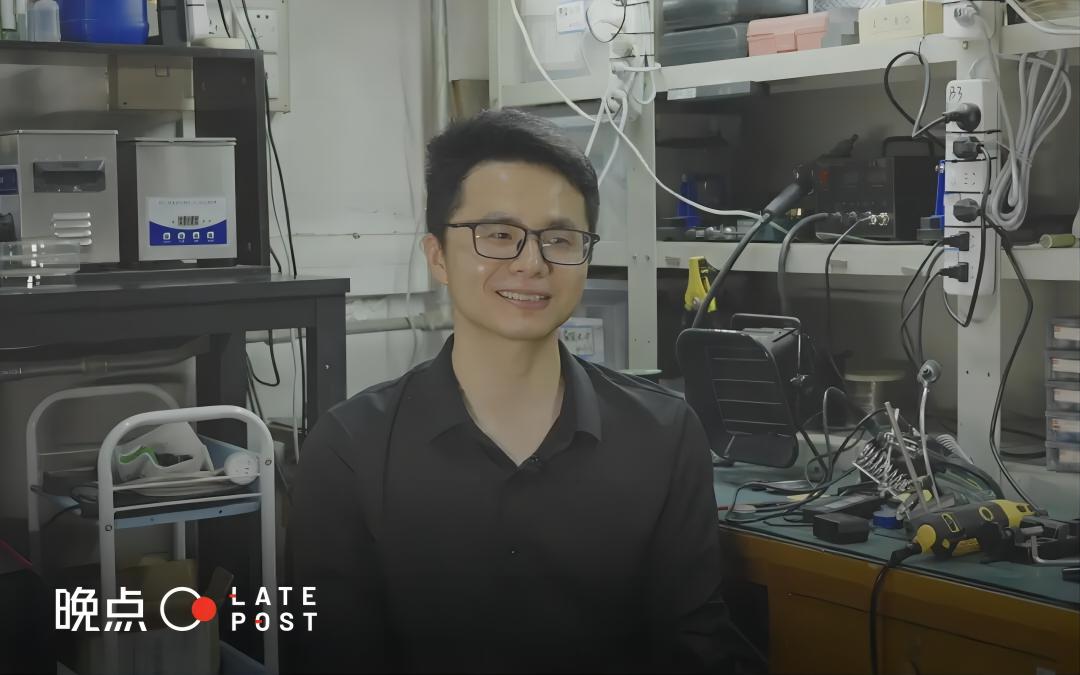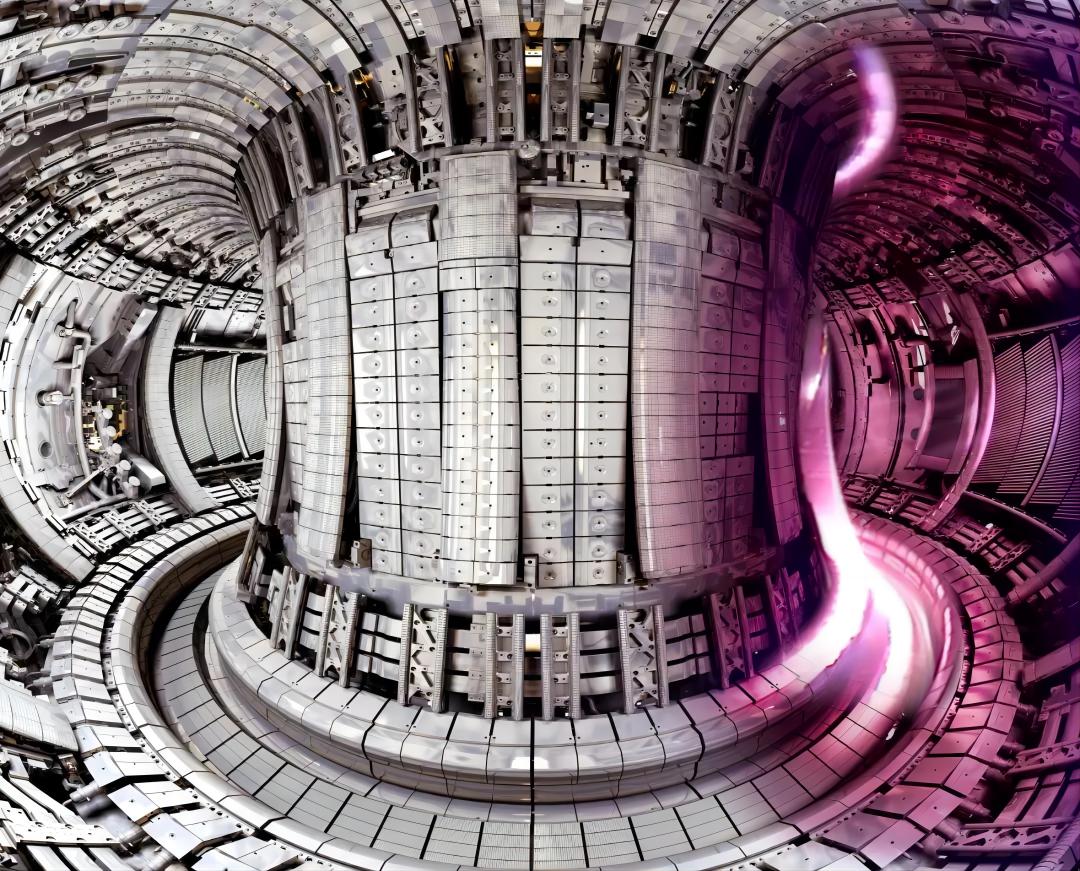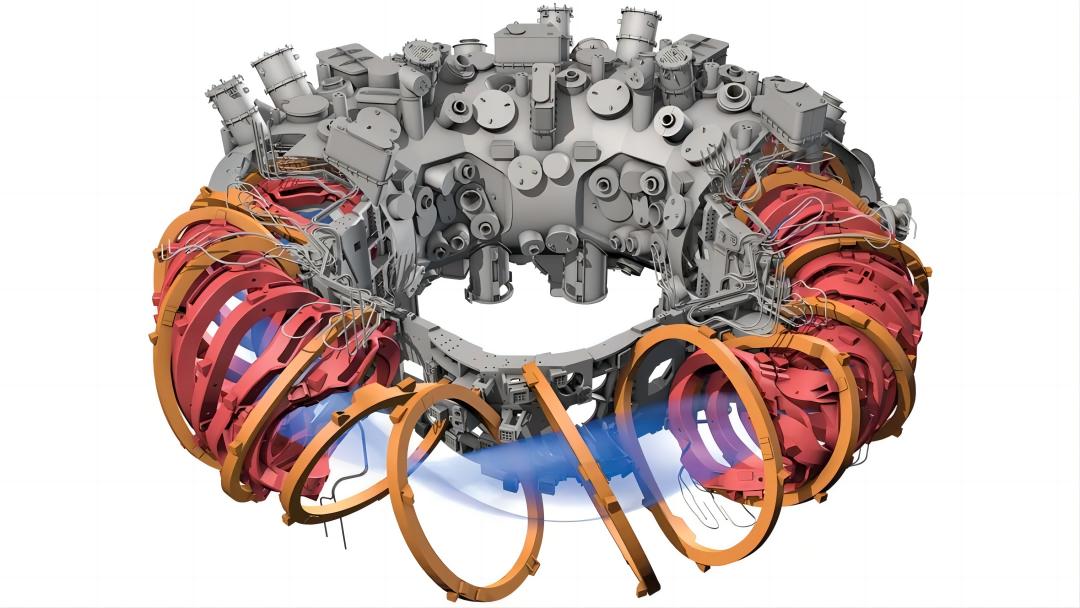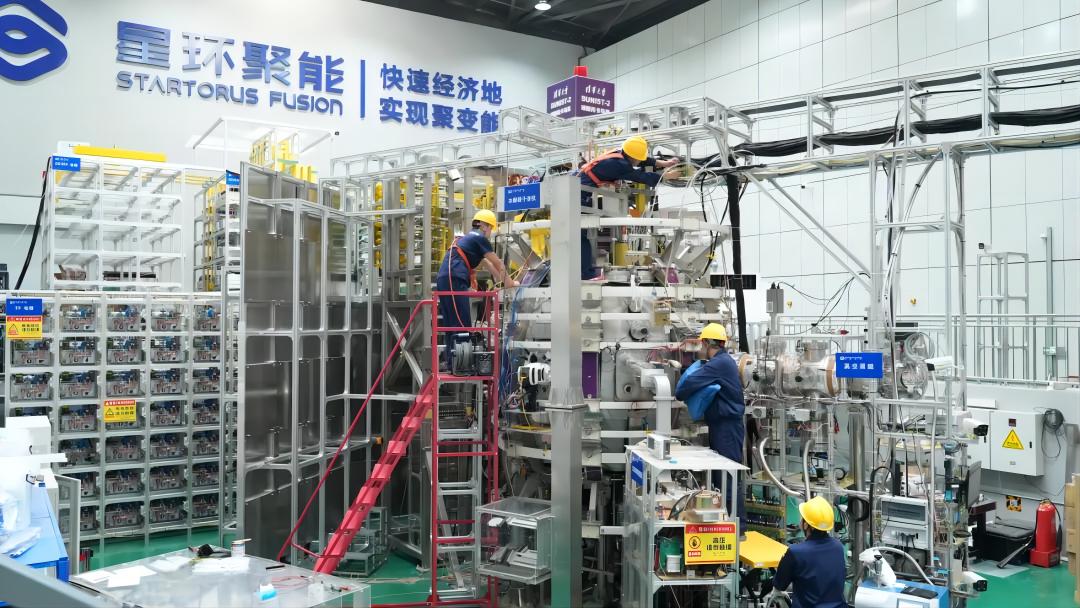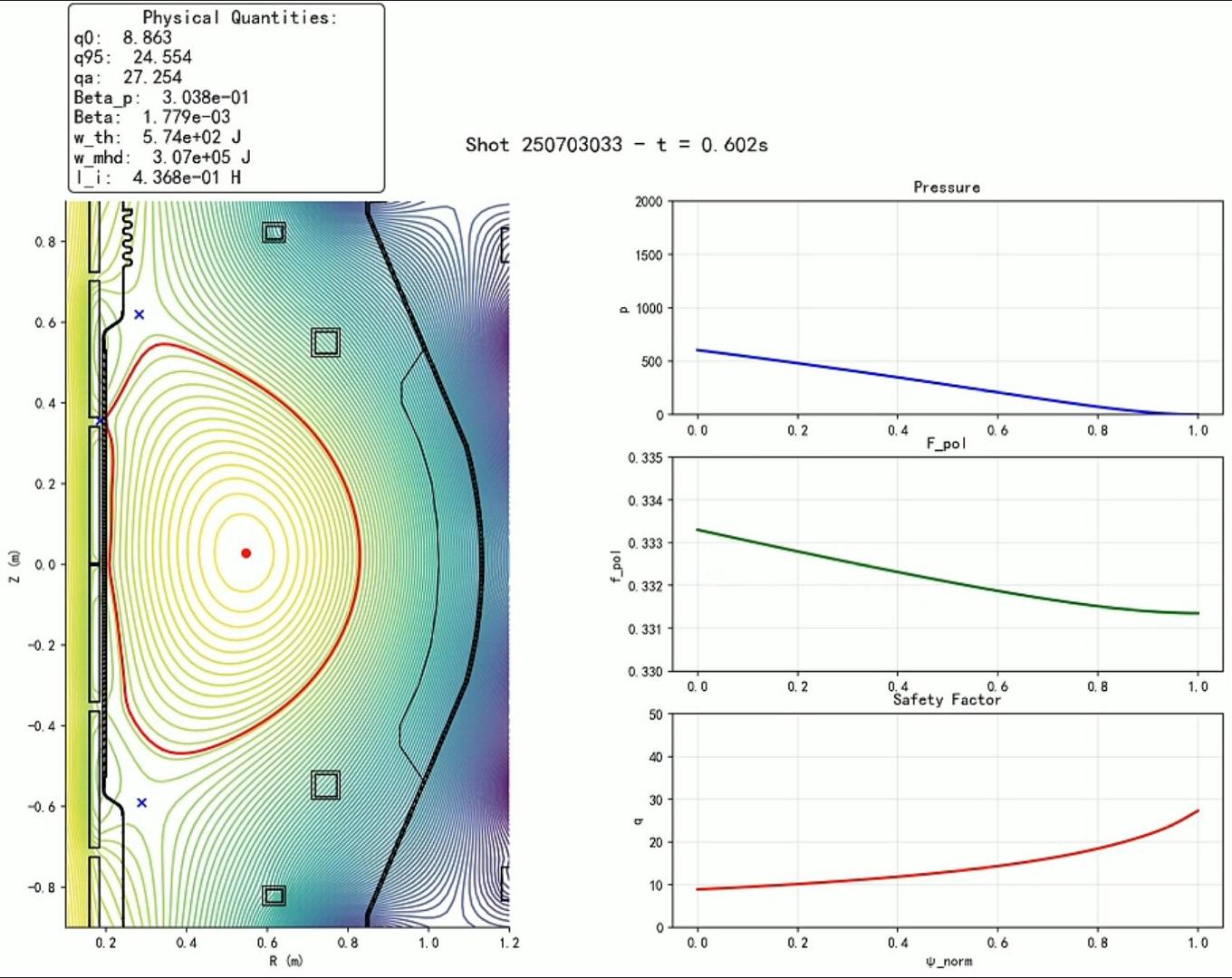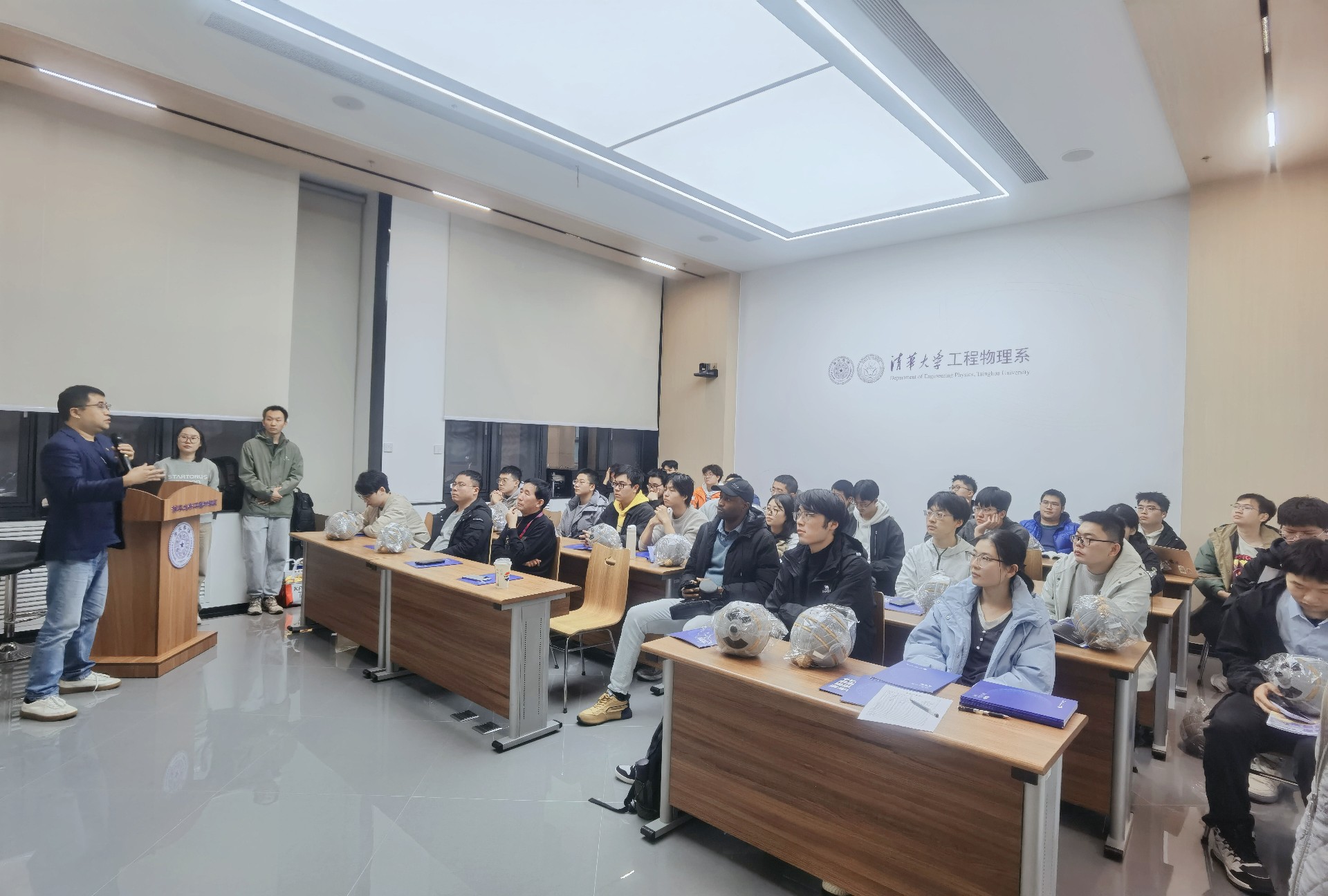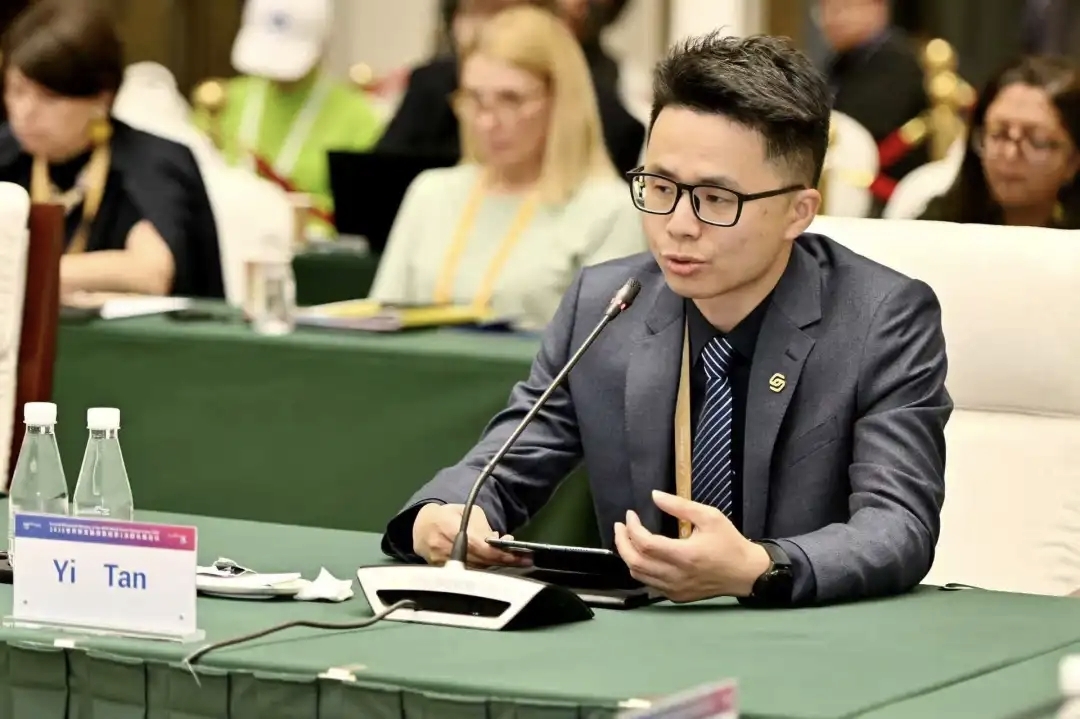"As an entrepreneur, I tend to think positively. Plasma has demonstrated this characteristic several times—when you feel hopeless, it often exhibits self-organising phenomena that you have never anticipated, performing better than expected." In response to the technical challenges that need to be addressed in fusion power generation, Tan Yi gave an optimistic answer during an interview with Late Post. The wave of fusion startups that began in the United States reached China in 2021, and Tan co-founded the fusion company Startorus Fusion, serving as its chief scientist. The company secured hundreds of millions of yuan in angel-round financing in June 2022, becoming one of China's first fusion entrepreneurs. With 20 years of prior research experience, Startorus Fusion, in collaboration with Tsinghua University, built its first-generation fusion device, SUNIST-2, in just 279 days and successfully ignited its first plasma. Currently, Startorus Fusion is designing the next-generation fusion device, CTRFR-1, which is expected to be operational in 2027. This device aims to not only stably and continuously heat plasma to 100 million degrees Celsius through repetitive reconnection but also achieve a Q value greater than 10. The following is the exclusive interview by Late Post “Fusion energy has always been 50 years away, but the possibility of being less than 10 years away exists alike.” Written by丨He Qianming Edited by丨Cheng Manqi "What if fusion power generation just can't be realized?” "Upon hearing this question, Tan Yi, who has been researching fusion at Tsinghua University for over 20 years, was silent for a few seconds and then laughed. He thinks this question "makes no sense" because fusion is "scientifically feasible". Scientists got to understand the principles of fusion during the Manhattan Project over 70 years ago. After World War II, the U.S. quickly used it to create hydrogen bombs. However, research into using fusion for power generation has gone through several ups and downs, and after the Cold War, it almost stagnated for over 20 years. The situation changed in 2021 when the American fusion company Helion announced that it had heated plasma to 100 million degrees Celsius, achieving what had previously only been possible in government projects. The fusion company CFS, a spin-off from MIT, developed high-temperature superconducting magnets that form stronger magnetic fields, significantly increasing the possibility of building fusion devices at lower costs. A wave of fusion startups emerged: Silicon Valley tech icons and billionaires like Sam Altman, co-founder of OpenAI, Peter Thiel, co-founder of PayPal, Bill Gates, and George Soros, as well as institutions like Google and DFJ, invested over $3 billion in the fusion industry in a short time, which is several times the cumulative funding provided by the U.S. government over several years. Tan Yi founded the fusion company Startorus Fusion the same year, serving as the chief scientist. The company secured hundreds of millions of yuan in angel-round financing in June 2022, becoming one of China's first fusion entrepreneurs. Another company, Energy Singularity, established in the same year, received an investment of 400 million yuan from companies like miHoYo. This month, the Fusion Industry Association (FIA) released a report stating that five companies plan to achieve fusion power generation by 2030, with another 21 targeting 2035. Tan Yi said that the fusion field also has "Scaling Laws", which is originally a physical concept: by increasing the size of fusion devices, the intensity of magnetic fields, and the efficiency of magnetic field utilization, better results can be achieved. "With much more investment and the participation of highly efficient companies with many incentives, this process will be greatly accelerated." His fusion research career began during the industry's low period. In 2002, when he was determining his research direction for a master's degree in nuclear physics at Tsinghua University's Department of Engineering Physics, Tsinghua had just built a tokamak device, so he stayed to pursue a doctorate in fusion. At that time, most countries were reducing investment in fusion. The U.S. Department of Energy's funding for fusion research fell to a quarter of its peak. "With however much money you have, you do that much work. Research progress was basically on a flat line," Tan Yi said. "Fusion is always 50 years away" was a saying that emerged during that period. The lab where Tan Yi worked also faced a funding shortage: after the fusion device was built, they faced significant financial pressure just to maintain and operate it. "The vacuum seals were even soldered by ourselves using thick fuses." However, Tan Yi did not change fields because this area closely aligned with his interests and strengths. After earning his doctorate in 2009, he stayed at Tsinghua to continue researching fusion, achieving associate senior titles only by 2015. Founding Startorus Fusion became a turning point in Tan's career. With 20 years of prior research experience, Startorus Fusion built its first-generation fusion experimental device in Xi'an in just 279 days and successfully operated it, igniting plasma—a fundamental requirement for achieving fusion. Startorus Fusion operates its first-generation fusion device, igniting the plasma. Image Source: Startorus Fusion. Over the past two years of entrepreneurship, Tan Yi says he has unlocked his potential, "achieving possibly more than in the past twenty years." He states, "Fusion is always 50 years away was correct at that time, and now, at this stage, it may be less than 10 years away." Startorus Fusion is designing the next-generation fusion device, expected to be completed by 2027. They plan for this device not only to achieve fusion but also to reduce energy consumption to one-tenth of the generated energy—just one step away from fusion power generation. U.S. fusion companies Helion and CFS plan to reach this goal this year or next. The problem is that Scaling Laws are merely a summary of past experiences, at most achieving 5.2 seconds of fusion. This record was set by the UK's tokamak device JET at the end of 2023. There is still a gap between 5.2 seconds of controlled fusion and stable power generation. Can past trends continue into the future? "As an entrepreneur, I tend to think positively." Tan Yi said, suggesting that if the device reaches some specific stage, its performance might be even better. The 70 years of research experience in the field of fusion has taught him that when you are in despair, unexpected physical phenomena will always emerge. Securing investment is a long-term task for them. Startorus Fusion's next-generation device requires 1.2 billion yuan, and the funds they have raised are still insufficient. Tan Yi is the kind of entrepreneur investors like but also find challenging. He has a strong research background, is a doctoral advisor, manages Tsinghua University's fusion devices, and can gather a team of professionals. He also has a successful entrepreneurial track record: Sucheon, which he founded in 2016, generated over 100 million yuan in revenue last year and recently completed a C1 round of financing. However, he has chosen a unique technical path for Startorus Fusion, one that is hard to find another company pursuing in the United States. Tan Yi said, "We need to explain to investors why our approach works." He hopes investors will be bolder. Below is our conversation with Tan Yi,founder and chief scientist of Startorus Fusion: "It is objective to say either we are always 50 years away or less than 10 years to the realization of fusion power generation." LatePost:Currently,five commercial companies have set a goal to achieve fusion power generation by 2030.Is the technology truly at this level? Tan Yi: There are still six or seven years until 2030. Scientifically, engineering-wise, or technically, there are no insurmountable problems with controlled fusion. I feel that we cannot judge the future development speed based on the pace of the last few decades of controlled fusion. Now there is much more investment than before, and besides state-owned research institutions, many companies with advanced incentive mechanisms and high efficiency are involved, which can indeed accelerate the process significantly. Late Post: ITER, a fusion device jointly invested by several government agencies worldwide, stands ten stories high and plans to operate in 2035, yet it hasn't set a definite goal to generate power. What is the reason for such a significant difference in expectations between the two sides? Tan Yi: Because the technical routes of both sides are entirely different. If everyone followed the ITER route and used ITER's collaborative approach, I believe no company would dare to say it could move faster than ITER. Commercial companies have made significant simplifications and adjustments based on ITER, such as reducing device size, adjusting technical routes, and improving team efficiency. This indeed saves many resources and could potentially shorten the time considerably. Late Post: So, is it the most suitable path for commercial institutions to lead the way in making fusion power generation a reality? Tan Yi: Commercial institutions are indeed more efficient. The current situation is that as long as there are no scientific principle issues with any path, it may receive support. The success of fusion would undoubtedly yield infinite benefits, but no one is absolutely sure about the most suitable way to achieve this goal. I think there needs to be saturated support, and eventually, some paths or teams will make breakthroughs and reap astonishing rewards. Late Post: During the Manhattan Project in the 1940s, when the atomic bomb (fission) where invented, the principles of fusion were already clear; by the 1950s, when the hydrogen bomb (fusion) was successfully created, the idea of fusion became even clearer. Why did nuclear fission power stations develop so quickly, while nuclear fusion power stations remain distant after more than 70 years of research? Tan Yi: The difference between atomic bombs and nuclear fission power stations is not significant. Fission power stations place many control rods in nuclear fuel, and the maintenance of the fission chain reaction is essentially no different from that of an atomic bomb. Indeed, not long after the hydrogen bomb was realized, the criteria for achieving fusion became very clear: for example, to achieve fusion with the elements deuterium and tritium, the temperature must reach 100 million to 150 million degrees Celsius, the density of the plasma (formed from deuterium and tritium) must be compressed to have 10 to the power of 20 particles per cubic meter, and the energy confinement time (using magnetic fields to compress and confine the plasma in a specific space) must be increased to the order of seconds. However, when we build a fusion power station, we can't detonate it like a hydrogen bomb with an atomic bomb; we have to find an entirely new approach, which is why nuclear fusion power stations have not yet appeared. The mainstream method now is magnetic confinement (achieving fusion with powerful magnetic fields). Over the past 70 years, everyone has been striving to achieve the conditions for fusion by reaching the necessary temperature, plasma density, and energy confinement time under controlled conditions. (Note: There are two exploration directions for achieving controlled fusion: one is inertial confinement, which simulates a hydrogen bomb explosion, and the other is magnetic confinement, which mainly involves compressing high-temperature plasma with strong magnetic fields.) Late Post: Over these 70 years, fusion research has experienced several ups and downs. The 1960s and 70s were the previous peak, and now we're seeing a new peak in investment. How did this happen? Tan Yi: It's closely related to international situations. The 1950s were a period of excitement, with countries frantically developing various plans, each hoping to be the first to achieve fusion, as the one who succeeds first would control the ultimate energy source. However, by the late 1950s, it became apparent that this was much more difficult than imagined, leading to a period loomed by a depressed atmosphere. In the late 1960s, the Tokamak device invented by the Soviets performed far better than initially estimated and gained worldwide recognition. Coupled with the Middle East war and the oil crisis in the 1970s, the following decade became a golden period for fusion. Countries invested heavily, and several major devices, including the JET, which was recently decommissioned and was the world's largest Tokamak device, were built during this time. The internal structure of the Tokamak device JET. A Tokamak is a "toroidal vacuum chamber with electromagnetic coils." The name is derived from the Russian words for toroidal (toroidal), chamber (kamera), magnetic (magnit), and coil (kotushka). Source: JET By the early 1980s, it was discovered that increasing the heating power of the Tokamak plasma would significantly worsen its confinement (energy confinement time). Plasma temperature is a key indicator of the Lawson criterion, as is energy confinement time. We want both indicators to rise simultaneously, but in reality, when one goes up, the other goes down, making it difficult to improve their product. Controlled nuclear fusion entered a dark phase. (Note: The Lawson criterion, proposed by British scientist John D. Lawson in the 1950s, states that for nuclear fusion ignition, the product of plasma temperature T, energy confinement time τ, and plasma density n must reach a certain value. Many fusion devices, including ITER, are designed to meet the Lawson criterion.) Plasma is fascinating, always offering a hopeful experimental phenomenon when you're in despair. In 1982, scientists observed a physical phenomenon known as "high confinement mode", whereas the plasma temperature rises, the energy confinement time does not decrease as rapidly. With the right device size, a Tokamak can meet the Lawson criterion. Late Post: Why does the saying "nuclear fusion is always 50 years away" persist? Tan Yi: After the 1990s, the international situation changed again: the Soviet Union collapsed, oil became very cheap, and there was no energy crisis. People felt that fusion wasn't as urgent. During that time, Americans even thought ITER was too expensive and temporarily withdrew. From the 1990s to 2010, although several devices achieved fusion reactions with power exceeding 10 megawatts, it was actually the afterglow of fusion's golden age. There wasn't much investment afterwards; progress was slow, and the saying "fusion is always 50 years away" actually emerged during this period. Around 2010, it became evident that high-temperature superconductors and AI technology could advance nuclear fusion. Coupled with global warming, the need for fusion became urgent again. From the late 2010s to the early 2020s, during the latest wave, people began investing in fusion once more. The previous "always 50 years away" has now become "within 10 years", and both are objective statements. This is related to the level of investment, technological breakthroughs, and other factors. "Always 50 years away" was accurate for its time, and now, at this stage, "within 10 years" could also be true. Nuclear Fusion Ha Scaling Laws Late Post: How do high-temperature superconductors and AI technology accelerate nuclear fusion? Tan Yi: High-temperature superconductors have the greatest impact on the two magnetic confinement routes, Tokamak and Stellarator (which has a twisted shape that creates a complex magnetic field capable of confining plasma). Fundamentally, the fusion output power of a magnetic confinement fusion device is determined by several factors: firstly, the cube of the size or volume; the larger the reactor, the higher the power. On the other hand, it is also proportional to the fourth power of the magnetic field and the square of the magnetic field utilization efficiency. By significantly increasing the magnetic field strength with high-temperature superconducting magnets, you can reduce the size of the reactor, lower construction costs, and still maintain high output power. AI can enable a reactor to operate more stably, potentially improving plasma performance by tens of percentage points. The difference between a well-run device and a poorly-run one could be just that—tens of percentage points in performance. Fusion plasma is a particularly complex system, essentially a black box. Fusion plasma requires a density of 1020 particles per cubic meter. Our current supercomputers cannot simulate the motion of such a vast number of particles. The only reliable method now is experimentation: different teams from different countries conduct various experiments on different devices, fit the data, and derive patterns. Although people can't clearly explain the underlying principles, everyone believes the results are trustworthy. This process is somewhat similar to training an AI model. You can think of AI as a fitting tool, but with a very large number of parameters—tens of billions. If you consider each particle in the plasma as a parameter, there are naturally some commonalities among them. The theory is difficult to develop and predict, so using data to infer outcomes, where AI plays a role, is quite natural. Late Post: Currently, many research institutions and commercial companies have a short-term goal to make the energy output of nuclear fusion exceed the energy input (Q value > 1). Is there a clear path to achieve this? Tan Yi: Yes. A Q value greater than 1, or in some more aggressive cases, Q equals 10 or greater, is a milestone before building a commercial fusion power plant. In terms of magnetic confinement, the three factors I mentioned earlier—size, magnetic field, and magnetic field utilization efficiency—determine three different routes: We call the ITER route the "Giant Tokamak Route", where the size is increased. It's a relatively safe but expensive approach. Another route is the "Strong (Magnetic) Field Tokamak", where the size is controlled, and the magnetic field is increased to achieve sufficient fusion power. The third route is the "Spherical Tokamak", where the device size is kept very small, the magnetic field is slightly higher than in the previous cases but doesn't need to be as high, and the magnetic field utilization efficiency is improved. Late Post: But currently, over 40 commercial fusion companies worldwide are trying more than 20 different types of nuclear fusion devices. Why are there so many devices? What are the differences between them? Tan Yi: The differences are significant. As for why there are so many approaches, I think it reflects the endless creativity that scientists have in pursuing fusion because the allure of fusion is simply too great. Diagram of a stellarator, using complex coils to create a magnetic field. Image source: Science. Late Post: So, there is no consensus yet on how to achieve fusion. Tan Yi: That's right. The Tokamak is generally recognized as the most advanced approach, but which method is most likely to build a fusion power plant and be the most competitive in the market, no one can say for sure. Late Post: Startorus Fusion has chosen the spherical Tokamak device. Why? Tan Yi: We found that the spherical Tokamak is the best. But it also partly depends on past paths. After all, we've been studying the spherical Tokamak for 20 years. Its advantages have been confirmed by many experiments, such as its high magnetic field utilization efficiency and relative ease of achieving nuclear fusion. The trouble with it is that achieving long-term continuous operation is more difficult than with a traditional Tokamak. So, we have made significant adjustments, turning it into a pulsed, repetitive operation device, bypassing this problem. On the other hand, heating is also more troublesome. Its power density is high, which means the plasma density is relatively high, making it difficult for various external electromagnetic waves to penetrate and effectively heat the plasma. Some waves can be injected, but it's a precarious process—if the plasma position shifts slightly or other parameters change, the efficiency can drop significantly. Some waves can even reflect and damage many components of the radiofrequency heating system. The heating system is also very expensive, and overall, it's challenging and costly. It's also not suitable for a future fusion reactor to operate with such extreme caution. So, we also modified the heating method, making it work like a multi-stroke internal combustion engine that operates in a repetitive cycle. This fits perfectly with our pulsed, repetitive operation mode, and it should be a very unique technical route worldwide. Late Post: The approach your peers are using seems quite straightforward—just replace the magnets in a tokamak with high-temperature superconducting magnets to strengthen the magnetic field. That could potentially achieve the desired effect, right? Tan Yi: They were not telling the whole story. The ultimate goal of a strong magnetic field is to increase power density, but that also means facing the same issues I mentioned earlier. Sometimes I feel that you have to look at the essence of a tokamak—it's essentially a transformer, which isn't inherently suitable for long-term steady-state operation. Nowadays, people are adding all sorts of auxiliary equipments to force it into being a device that can operate steadily over long periods, but the cost of doing so is high. It's fine for research devices to be expensive, but for a fusion power plant to compete in the electricity market, cost becomes a significant consideration. Late Post: So commercial companies don't need to focus much on basic fusion research; they just need to get the engineering right? Tan Yi: That's the reality. Even ITER is designed based on empirical scaling laws derived from past experiments, rather than a complete understanding of the fundamental physics of fusion plasmas. The most influential factors in these scaling laws are things like the device's magnetic field, size, and current. To change these factors, you have to keep iterating on engineering techniques to build higher-performing devices. Late Post: What do you mean by "scaling laws"? Tan Yi: Scaling laws are curves or functions—usually incorporating about a dozen factors—that are fitted from hundreds of experimental data points. In a way, they're similar to what large language models are doing now. Starting a Fusion Startup from Scratch: You Can't Just Focus on the Problems Late Post: In 2016, you founded a company called SUCHEON Technology, whose main product was a technology derived from your research on tokamak devices—using sound waves to detect machine conditions. At that time, companies similar to yours, like Tokamak Energy, had already been established for 7 years, and Helion for 3 years. Why didn't you start a fusion company right away? Tan Yi: In 2016, we were aware of international peers starting fusion companies. But we had no idea what the domestic capital market's attitude was like, and even the idea of starting a business was entirely new to us. We had no understanding of the entrepreneurial environment, the process, or the challenges we might face. The technology path for Startorus Fusion also wasn't fully formed at that time. Leveraging SUCHEON to apply fusion-derived technology in the industrial field first was also a good move. Late Post: What happened later that made you feel you could start a fusion company? Tan Yi: The founding and development of SUCHEON Technology were important stepping stones. SUCHEON was a complete process from idea to product, which made me think more about solving problems based on user needs. By 2018-2020, SUCHEON had completed several rounds of financing, and we had regular communication with some experienced investors. By 2021, some investor friends believed that China's venture capital market could accommodate a fusion company. Our technical route was also ready, and after multiple comparisons with overseas counterparts, we found our advantages to be very prominent, so we decided to establish Startorus Fusion. Late Post: There aren't many fusion research institutions in China, and even fewer have turned into commercial companies. Where did you find the right people when founding Startorus Fusion? Tan Yi: Tsinghua University has a small spherical tokamak device that has been operating for 20 years. Although it is one of the smallest tokamaks in the world, it is still a complete tokamak with all the necessary components. Our core team members are all Ph.D. graduates from this lab. They are smart and capable, with five to six years of hands-on experience on this device. They formed the company's scientific team, converting the physical problems of fusion into ordinary engineering problems, such as determining how many turns of coils to add (mechanical engineering) and what current to apply (electrical and electronic engineering). We could recruit the engineering and technical talent for these specialized areas from the job market, where there was a broad pool to choose from. Late Post: What is the process of building a fusion device from scratch? Tan Yi: First, you need to clarify the physical goals, such as the electron density, temperature, energy confinement time, plasma current, magnetic field, plasma shape, and so on. Once these targets are set, you move on to the physical design, determining the size of the vacuum chamber, the size and placement of the magnetic field coils, and the current in each coil. After the physical design is complete, you enter the engineering design phase, converting these physical parameters into a mechanical entity that can be manufactured, installed, and maintained. Then you start assembling, building the supporting power and control systems, and finally begin commissioning. The goal is to achieve the first plasma, and then continue optimizing it to reach the target parameters. Late Post: It sounds like there aren't many secrets in the fusion industry. Tan Yi: The major principles are well understood by all. Even when we explain our technical route, peers can generally grasp the idea. However, the specific challenges and how to handle them can only be fully understood and solved through hands-on experience. We've faced numerous difficulties while building and operating the device, with new problems arising almost every week for a while. Startorus Fusion's first-generation fusion device. Image Source: Startorus Fusion. Late Post: If we consider fusion power generation as a 100% progress bar, what does it mean that Startorus Fusion 's first-generation device has ignited plasma and heated it to 17 million degrees? Tan Yi: In terms of parameters alone, the progress bar is less than 20%. After all, we need to reach 100 million degrees to achieve fusion conditions. But this doesn't necessarily mean it will take as long as it seems. Whether it's us or other research institutes or companies, the performance improvement from one generation of devices to the next is exponential. According to our plan, the next-generation device should be able to achieve a Q factor greater than 1, possibly even greater than 10. Late Post: No device in the industry has ever achieved a Q factor greater than 10. Where does your confidence come from? Tan Yi: It comes from the scaling laws I mentioned earlier. Late Post: When will it be completed? Tan Yi: According to our roadmap, we hope to have it completed by 2027. We are also honest that there might be some unexpected challenges, and some technologies may take more time to develop. So far, we are still working towards this goal. Late Post: Are there no difficulties or technical barriers? Tan Yi: If we purely follow the scaling laws, there aren't many difficulties. The tricky part is that the scaling laws only go up to the JET parameters (5.2 seconds of fusion). To achieve a Q factor greater than 10, we need to reach ITER-level parameters. Below JET, the data points are very dense, and the scaling laws are considered quite reliable. But there is a gap between JET and ITER. Whether this gap still adheres to the scaling laws is somewhat uncertain. There's a blank spot in the middle, and pessimistic people might imagine the worst. But as an entrepreneur, I tend to think positively—once the device is built to that scale, its performance is likely to exceed the scaling laws. Plasma has shown this trait several times; when you're feeling hopeless, it always produces some unexpected phenomena, performing better than anticipated. Late Post: Some companies say it will cost 3.5 billion RMB to build such a device. You say you can do it with just 1.2 billion RMB. How? Tan Yi: Our technical route eliminates a lot of extra equipments, such as heating and current drive systems, which significantly reduces costs. Generally speaking, for a tokamak device, the cost of the current drive and auxiliary heating systems is often higher than the main unit. Our device is also smaller than those following the strong magnetic field tokamak route, which further reduces costs. Late Post: Even 1.2 billion exceeds the amount of money Startorus Fusion has raised so far. Is your fundraising going smoothly? Tan Yi: We interact with various investors every day. The reality we face is that no other company globally has a solution identical to ours, or to put it bluntly, no American company has this solution. We have to take extra steps to explain to investors why no American company is pursuing this route and how our approach can be successful. Companies with solutions similar to those in the U.S. don't need to do this when raising funds. Innovation needs to be systematic. Our entrepreneurs and scientists have done enough original innovation, and we hope investors dare to invest in a technical route that American companies haven't tried. Late Post: Have you thought about how to monetize fusion power generation? Will you sell it directly to the grid? Tan Yi: Connecting to the grid involves strict procedures, but I'm optimistic. If we don't connect to the grid, we have more freedom and flexibility. Many private companies have their power plants. In China, some data centre operators, electric vehicles, and battery manufacturers could have potential demand. For example, when electric vehicles leave the factory, they need to be fully charged, and they find buying electricity from the grid too expensive. Our reactor is relatively compact and could be placed on ships over 100,000 tons, which is also a significant application scenario. Late Post: After operating Startorus Fusion for two years, are you more optimistic about fusion? Tan Yi: Yes, I am. I have personally experienced how much faster things move when there is financial support and when the management system is commercialized. The results achieved in the past two years of commercialization might be more than what I achieved in the previous 20 years. From my perspective, once this becomes commercialized, there's no turning back. The process might have some uncertainties and challenges, but no matter what, we have to solve them. This is a practical requirement. Late Post: How long until the average person like us can use electricity generated by fusion? Tan Yi: According to our plan, about ten years. Cover image: Tan Yi being interviewed in a laboratory at Tsinghua University, photographed by a Late Post author.